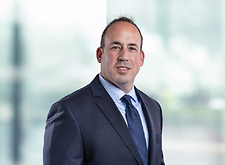New York Proposal Would Remove Major Cost Barrier to Standalone Distributed Energy Storage Deployment
On the eve of Thanksgiving, NYSERDA and Department of Public Service Staff posted their much-anticipated Whitepaper on Allocated Cost of Service Methods Used to Develop Standby and Buyback Service Rates recommending that the Public Service Commission (the “Commission”) exempt energy storage providers from certain utility “buyback service” charges based on energy injections. These charges have been a major impediment to deployment of distributed standalone energy storage in New York City especially, where energy storage resources are sorely needed. Because standalone storage typically relies on injecting a battery’s full capacity at peak hours of grid demand, current tariffs result in hefty demand charges.
While distributed PV solar, including systems with co-located energy storage, are exempt from Standby and Buyback Service altogether, standalone energy storage is not. The Whitepaper, however, did not go so far as to recommend exempting energy storage from Standby or Buyback Service completely. Instead, it only proposes a 20-year exemption from Contract Demand Charges under Buyback Service for standalone energy storage projects interconnected and operational by December 31, 2025. Standby Service is for customers that self-supply some or all of their electricity needs from on-site generation sources. The service compensates the utility for providing backup electricity in the event that private generation is not available. Buyback Service is designed for customers that use their on-site generation to export power back to a utility-owned electric grid, and is required for non-exempt customers wishing to inject power.
In making its recommendation, DPS Staff and NYSERDA concluded that the potential for cost shift to other ratepayers from exempting standalone energy storage will likely be small, and outweighed by other ratepayer benefits, including the achievement of economic savings and beneficial system operations that storage provides.
The Whitepaper will be subject to a 60-day notice and comment period after which the Public Service Commission may decide whether to adopt some or all of the proposed changes. We expect the utilities to push back hard against this potentially significant hit to their revenue.
To learn more about how rate design changes could affect standalone energy storage projects, or assistance in submitting comments, please contact Noah Shaw (518.736.2924) or Peter Ross (646.218.7528) in Hodgson Russ’s Renewable Energy Practice.
If you received this alert from a third party or from visiting our website, and would like to be added to our Renewable Energy alert mailing list or any other of our mailing lists, please visit us HERE.
Featured
- Partner
- Partner
- Partner
- Partner
- Partner
- Partner
- Partner
- Partner
- Senior Associate
- Partner
- Partner
- Co-Chair of the Firm, Partner
- Partner













